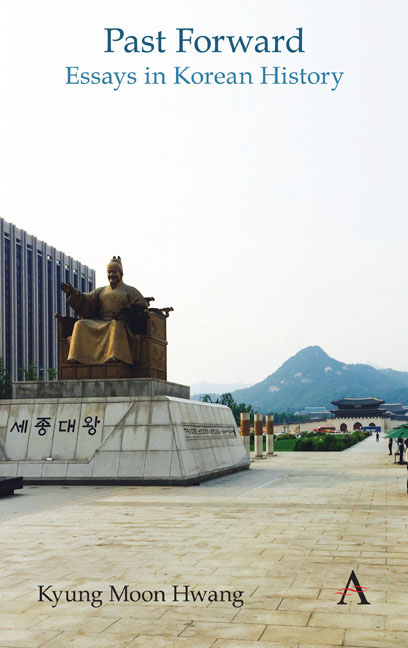Book contents
- Frontmatter
- Contents
- List of Figures
- Foreword
- Chronologies of Korean History
- Themes
- Acknowledgments
- Note on Romanization and Spelling
- Part I Circulating History
- Part II Durable Traditions
- Part III Ancient Remains
- Part IV Dynastic Depths
- Part V Modern Origins
- 24 Jungin, Forerunners to Professionals
- 25 1894, a Signal Year
- 26 Great Korean Empire
- 27 March First Independence Movement
- 28 The Politics of Disease
- 29 Korean Universities
- Part VI Challenges of Nationhood
- Part VII History Makers
- Part VIII External Presences
- Part IX Trials of Modernization
- Part X Gripped by the Past
- Index
29 - Korean Universities
from Part V - Modern Origins
- Frontmatter
- Contents
- List of Figures
- Foreword
- Chronologies of Korean History
- Themes
- Acknowledgments
- Note on Romanization and Spelling
- Part I Circulating History
- Part II Durable Traditions
- Part III Ancient Remains
- Part IV Dynastic Depths
- Part V Modern Origins
- 24 Jungin, Forerunners to Professionals
- 25 1894, a Signal Year
- 26 Great Korean Empire
- 27 March First Independence Movement
- 28 The Politics of Disease
- 29 Korean Universities
- Part VI Challenges of Nationhood
- Part VII History Makers
- Part VIII External Presences
- Part IX Trials of Modernization
- Part X Gripped by the Past
- Index
Summary
The history of higher education in Korea is, depending on how one defines it, either remarkably long or surprisingly short. In the late fourteenth century, the new Joseon kingdom established an academy for aspirants to government office, where they could study for the state's civil service examination. However, this training center, called Seonggyungwan, had a curriculum limited to Confucian ethics and philosophy; it lacked a program to teach the arts, administration, practical sciences and technical specialties, which were taught by other schools. It would be difficult, in other words, to recognize the Seonggyungwan as a university, despite claims by the current Sungkyunkwan University of a history of over 600 years.
As a modern institution, the Seonggyungwan, in fact, began at the turn of the twentieth century, when it, along with schools with names like Yonhi, Severance, Sookmyung, Ewha and Bosung, was established to meet the needs of specialized education beyond the secondary level. In the subsequent period of Japanese colonial rule (1910–1945), these schools, which became the forerunners to well-known universities later, joined the many institutions of higher learning that, much like technical colleges, specialized in fields such as medicine, theology and women's education. There was, however, one recognizable university in the colonial period, Keijo Imperial University in Seoul (“Keijo” in Japanese), which was founded in the mid-1920s. This university, though, was built not to serve as an open-access public institution of higher education, but rather to cater to the hundreds of thousands of Japanese settlers, as well as to a relatively small number of Koreans.
Following liberation in 1945, this configuration of one university and many specialty colleges developed into the array of universities in South Korea that we see today. Under the American occupation (1945–1948), for example, Keijo Imperial University became the basis for the formal establishment of Seoul National University (SNU) in 1946. (This connection to the colonial past is understandably a sensitive topic, so in its official narrative SNU has simply erased this part of its history.) More troubling than the Japanese connection, however, and for reasons that defy easy understanding, SNU, along with Korea University (the descendant of Bosung College) and Yonsei University (the joint descendant of Yonhi College and Severance Medical School), somehow became entrenched as the “top three” universities in prestige and power.
- Type
- Chapter
- Information
- Past ForwardEssays in Korean History, pp. 85 - 86Publisher: Anthem PressPrint publication year: 2019



